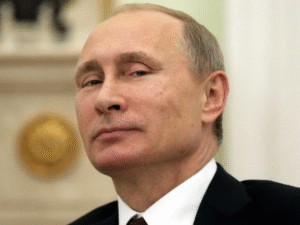$LMT $RTX $BTC
#Ukraine #Russia #USMissiles #Military #DefenseIndustry #Stocks #Escalation #UkraineCrisis #Geopolitics #SupplyChain #MarketImpact #LongRangeMissiles
Ukraine fired a U.S.-supplied long-range missile into Russian territory early Tuesday, according to a statement from Russia’s Ministry of Defense. Moscow claims the missile—a U.S.-manufactured Army Tactical Missile System (ATACMS)—struck the Bryansk region. This development follows the recent authorization from the U.S. administration allowing Ukraine to use these weapons against targets inside Russian territory. The move marks a notable shift in the dynamics of the ongoing conflict and could potentially bring U.S. defense contractors more deeply into the geopolitical crossfire, signaling potential impacts on financial markets, particularly within the defense sector. Companies like Lockheed Martin ($LMT) and Raytheon Technologies ($RTX), both key suppliers of advanced missile systems, could experience stock movement as investors react to increased demand for military hardware following heightened tensions.
From a broader market perspective, such actions are likely to increase concerns about further escalation in the region, which could lead to increased volatility in global financial markets. Historically, geopolitical crises have driven upticks in defense stock prices but have also raised concerns about supply chain resilience, particularly if sanctions or shipping routes are adversely affected. For equity investors, it means a potential re-allocation into defense stocks, which could be seen as a safe bet in times of prolonged conflict and uncertainty. On the flip side, global markets and commodities like oil and gas may experience further price pressures, especially as energy supplies from the region continue to be at the mercy of political developments. The latest strike follows months of supply chain interruptions, mainly due to sanctions imposed on Russia, which has exacerbated global inflation and commodity pricing challenges.
At the same time, Russia has been explicit in its warnings that Washington’s decision to supply Ukraine with these powerful long-range weapons could lead to a significant escalation in the conflict. Financial markets might interpret this warning as a signal of further instability, prompting investments in low-risk assets such as gold or U.S. treasuries. Already, Bitcoin ($BTC) and other cryptocurrencies have become more prominent in the context of global uncertainty, serving as a hedge for those fleeing out of riskier or more volatile currencies and markets. The ongoing conflict in Ukraine, and the subsequent sanctions against Russia, have played a role in pushing digital assets into mainstream attention, with cryptocurrencies often being used as alternative stores of value when traditional markets face disruption.
From a macroeconomic view, the ongoing conflict and the introduction of long-range U.S. missiles directly into Russian territory could catalyze further breakdowns in global trade, particularly in sectors highly reliant on Eastern European or Russian input, like energy, agriculture, and metals. As these challenges unfold, investors may be inclined to monitor production cycles and trade routes impacted by potential new sanctions or military actions. Additionally, with heightened geopolitical tensions, both traditional currencies and decentralized financial assets are poised to experience volatility, forcing firms and governments to reconsider their defensive fiscal strategies while consumers contend with rising inflation and commodity prices globally.







Comments are closed.